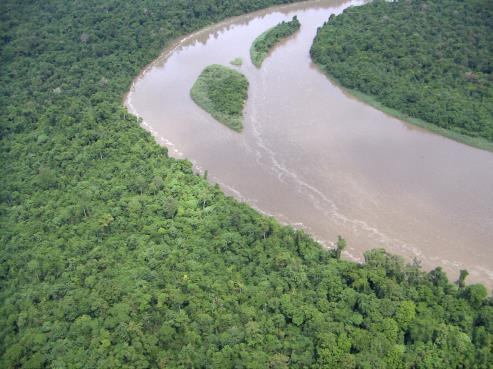
1 minute read
Agencies of Damage
from PNGAF MAGAZINE ISSUE # 9D 2 of 15th October 2021 THE DEVELOPMENT OF PNG'S FOREST MANAGEMENT SYSTEMS
by rbmccarthy
Agencies of Damage
Throughout geological time, PNG’s vegetation is associated with Australian
Advertisement
vegetation due to the influence of continental drift, coupled with a history of climatic
fluctuations.
The present boundaries of rainforest are far from static. Given freedom from fire and other disturbance, there would be a tendency for rainforest to encroach into adjoining plant formations.
PNG is a land wracked by continual catastrophe. The mountains are young and continuing to uplift as the Australian plate subducts below the Pacific plate, so earthquakes with associated landslides are frequent on the young steep slopes. There are numerous active volcanoes, which create lava flows and mudflows and thick ash deposits. Strong destructive winds occasionally occur. In exceptionally dry years those forests that are always slightly seasonal become unusually dry and may catch fire. The big rivers that run on the coastal plains have unstable courses. Shifting cultivation and associated regrowth forest is also extensive. It is no surprise that lists of timber tree species for a tract of lowland rainforest in PNG usually include a considerable proportion of pioneers, such as species of Albizia, Paraserianthes and Serianthes, or Eucalyptus deglupta, besides strongly light-demanding climax species such as Campnosperma spp, Pometia pinnata and Terminalia spp.
The impact of El Nino Southern Oscillation events (this is part of a pantropical climatic perturbation which results from anomalous warming of the usually cool surface of the eastern equatorial Pacific Ocean) has seen rare droughts in the tropics (PNG 1972), which in turn are linked in recent times with higher and higher incidences of uncontrolled bush wildfires throughout affected tropical areas. The recovery of fire damaged stands is slow and a downward spiral to non-forest cover is one potential outcome.
Photo Left Ramu River near Madang. Photo credit Dick McCarthy 2001. Photo Right Volcanic explosion 1994 Rabaul Airport. Photo Credit Dick McCarthy.








